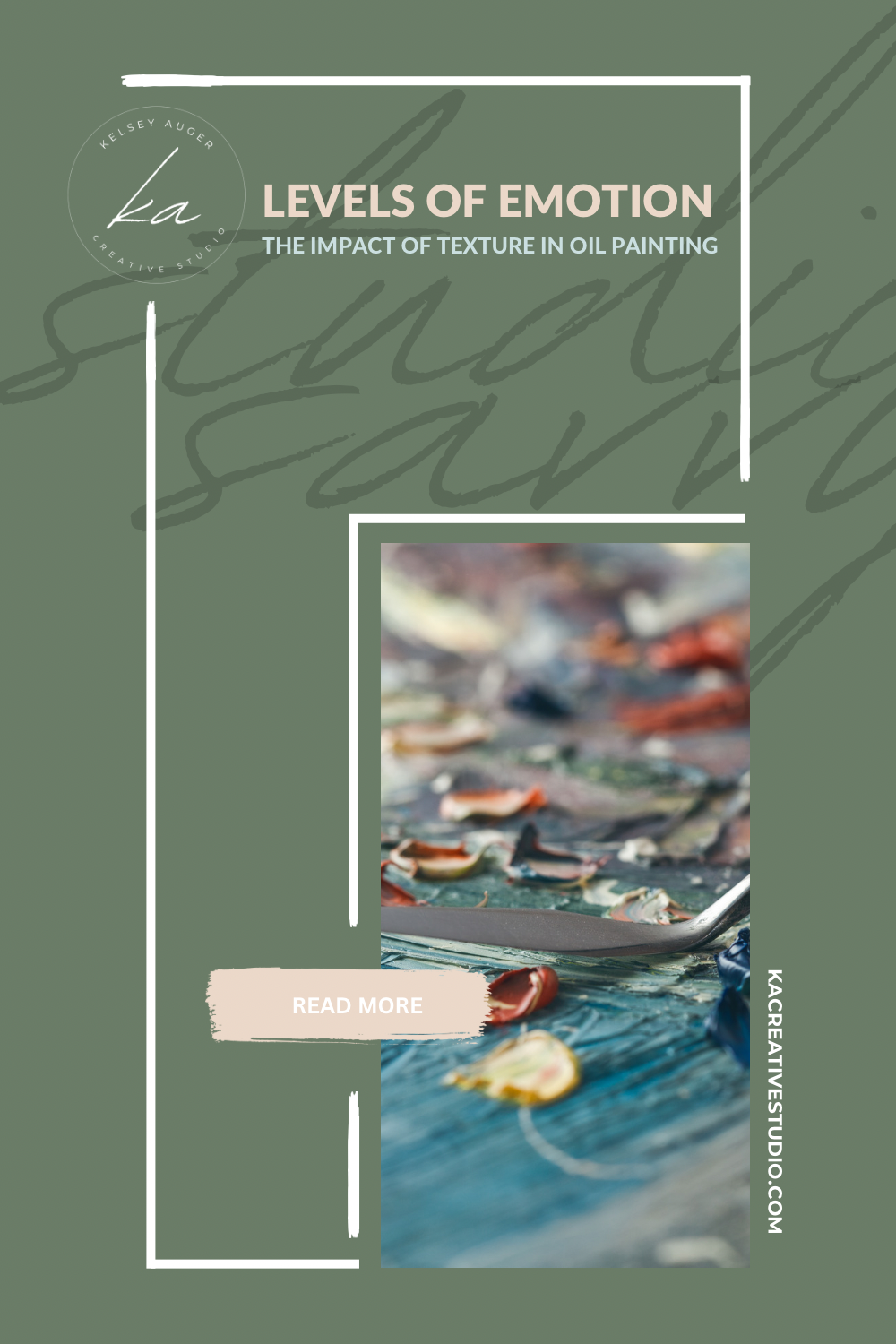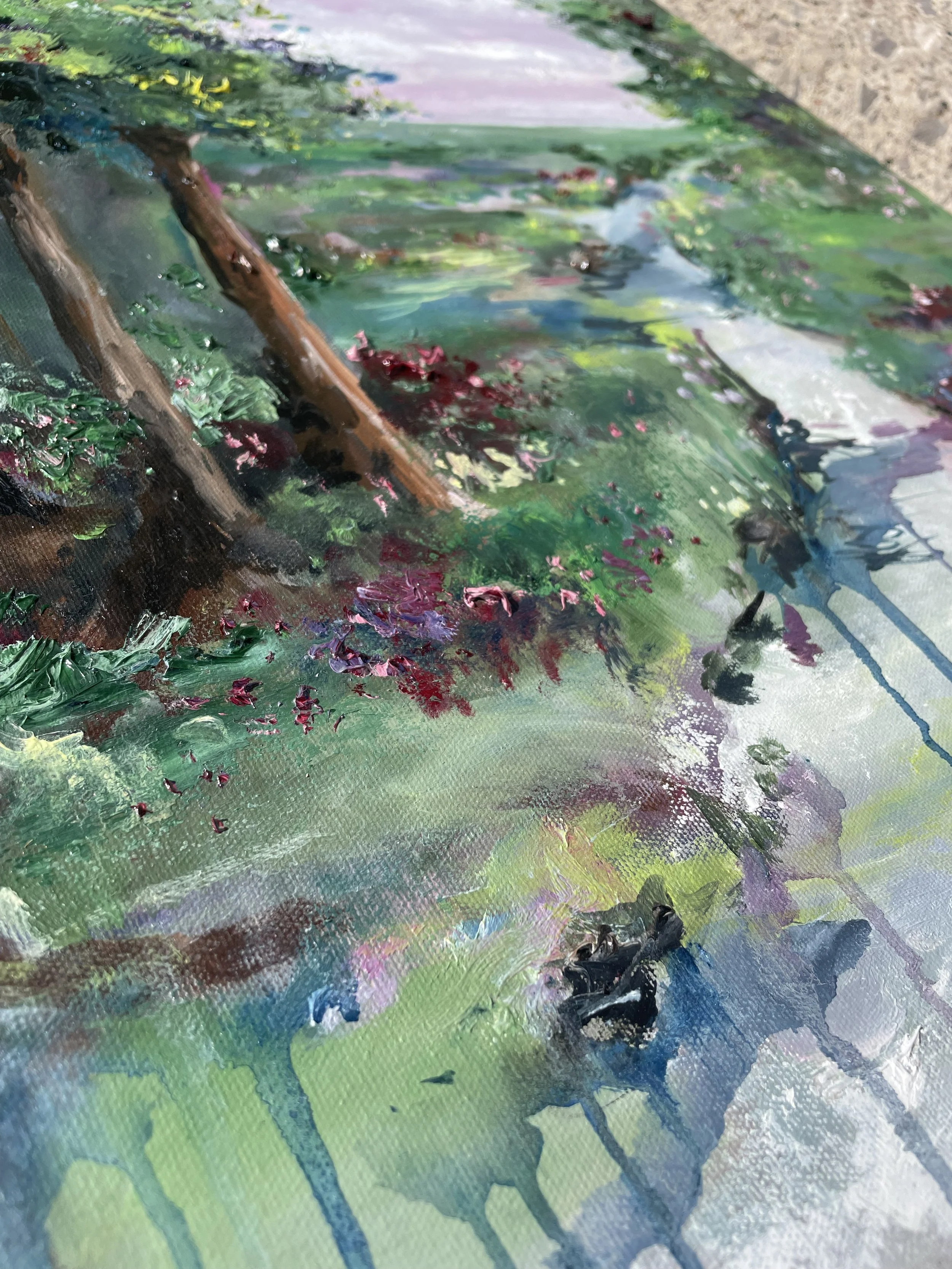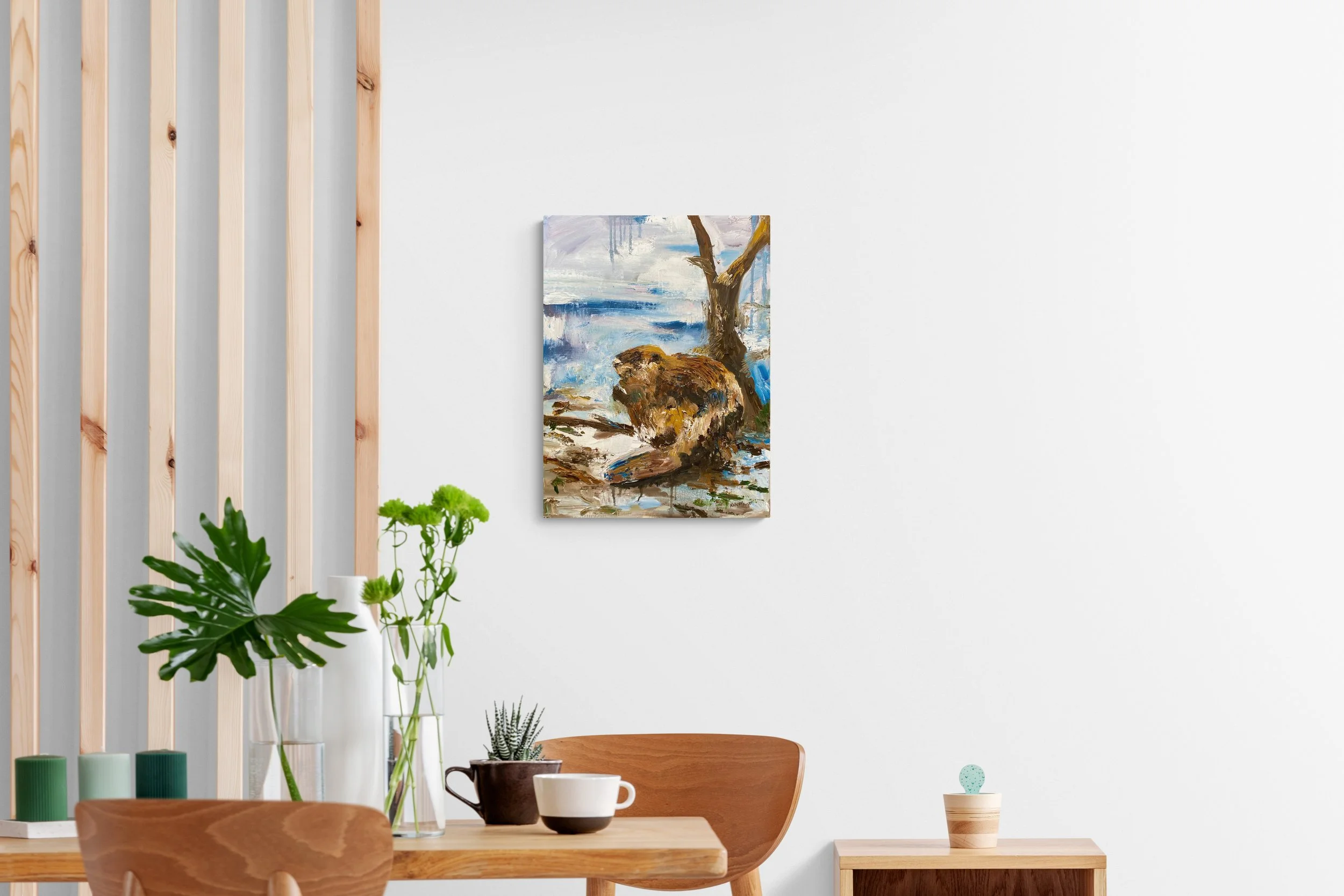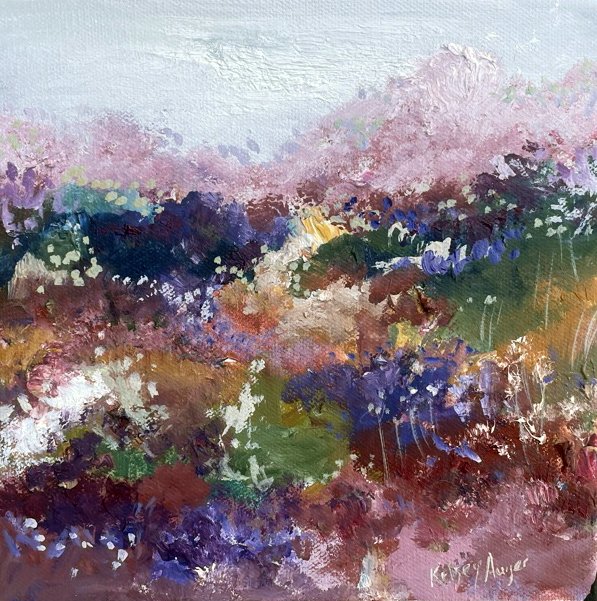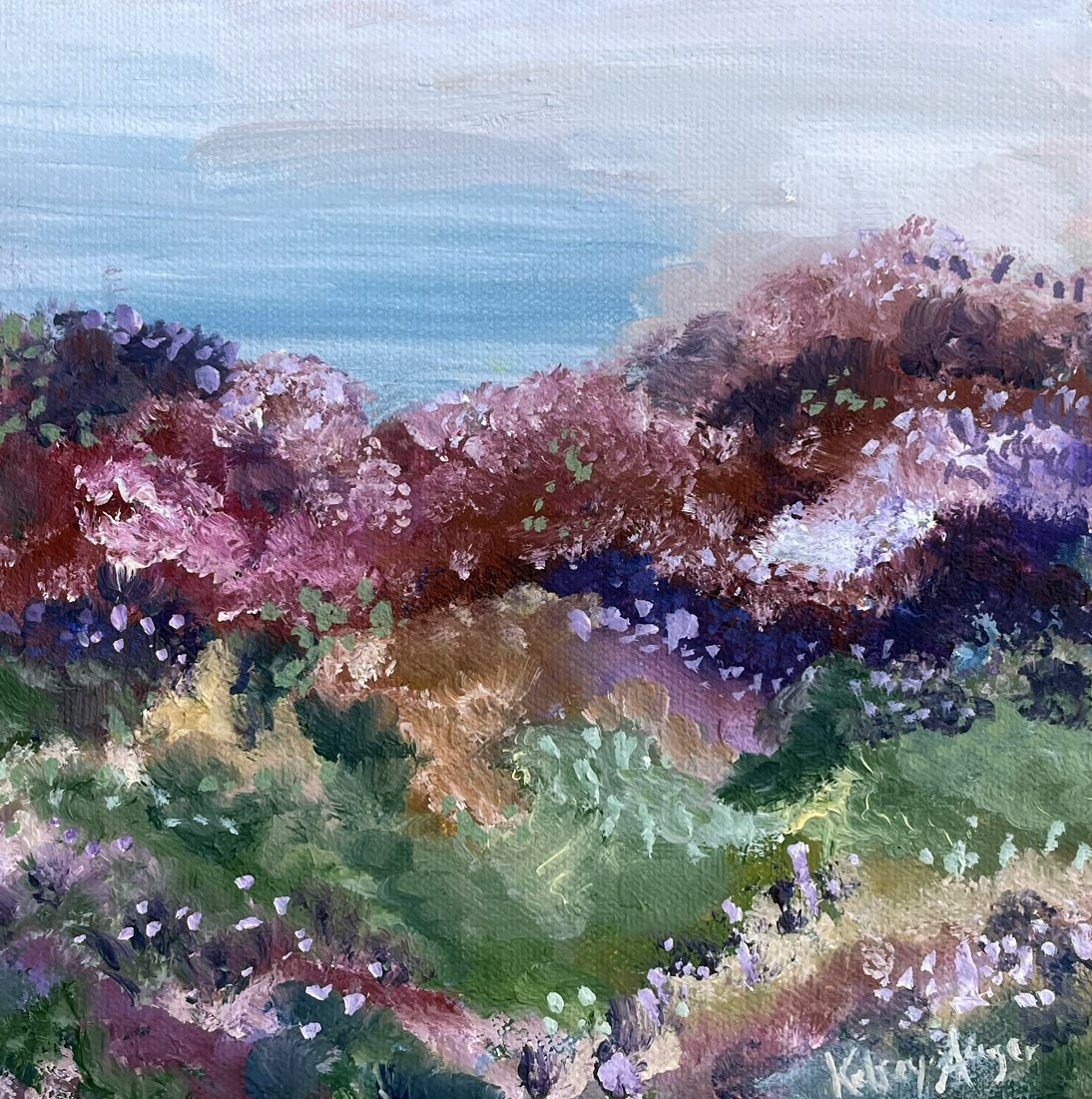Levels of Emotion: The Impact of Texture in Oil Painting
When choosing artwork for your home or office, the emotional connection you feel to a painting is often what draws you in. In oil paintings, especially those in the impressionistic style, texture plays a crucial role in conveying emotion. From the bold strokes of a palette knife to the fluidity of dripping paint, each textural element adds a different layer of feeling to the work. Understanding these elements can help you select a painting that resonates with you on a deeper, more personal level.
1. Palette Knife: Bold Strokes for Dynamic Spaces
If you’re drawn to paintings with strong, dynamic energy, look for those created with a palette knife. The bold, textured strokes created by this tool can convey raw, intense emotions such as passion, excitement, or strength. These paintings are perfect for spaces where you want to feel energized and inspired, like a living room or a creative workspace.
Interpretation: The thick, bold textures suggest movement and power, making the painting feel alive and full of potential.
Ideal Space: A room where you seek motivation or want to make a strong visual statement.
2. Dripping Paint: A Touch of Fluidity and Reflection
Paintings that incorporate dripping techniques offer a sense of fluidity and movement. The way the paint flows down the canvas can evoke feelings of calm, introspection, or even a sense of time passing. These works can be especially appealing in spaces where you want to foster contemplation or relaxation, such as a bedroom or reading nook.
Even watching this video of paint dripping can be an uber relaxing thing!
Interpretation: The soft, flowing lines of dripping paint can create a soothing, almost meditative atmosphere.
Ideal Space: Areas where you relax, unwind, or reflect, such as a bedroom or a meditation space.
3. Thick vs. Thinned Paint: The Balance of Emotion
Paintings that balance thick and thinned paint offer a contrast of emotions. Thickly applied paint can convey intensity and depth, while thinned paint might suggest softness or subtlety. This interplay of textures can add complexity to a room, making the artwork a conversation piece that evolves with every glance.
Interpretation: The contrast between heavy and light textures invites viewers to explore the painting’s emotional depth, offering something new each time.
Ideal Space: A place where you enjoy engaging with art, like a dining room or an entryway, where the painting can capture attention and spark discussion.
4. Movement in Texture: Energy and Flow
In impressionistic paintings, movement is often conveyed through texture. The way paint is applied—whether in sweeping arcs or tight, staccato strokes—can create a sense of rhythm and flow, echoing the movement of emotions themselves. This dynamic quality makes these paintings perfect for areas where you want to evoke a sense of vitality and life.
Interpretation: The sense of movement in the painting can inspire feelings of joy, excitement, or even the ebb and flow of life’s journey.
Ideal Space: Areas where energy and activity are central, such as a family room or kitchen, where the painting can bring a lively atmosphere.
5. Impasto: Depth and Tactility
Impasto is the technique of applying thick layers of paint to create a three-dimensional effect on the canvas. Paintings with impasto technique offer a tactile experience, inviting you to connect with the work not just visually but almost physically. The depth and richness of these textures can evoke strong, layered emotions, making them ideal for spaces where you want to feel deeply connected to the artwork.
Interpretation: The rich, layered textures of impasto can evoke a sense of warmth, comfort, or profound emotion, creating a feeling of intimacy.
Ideal Space: A cozy, personal space like a study, bedroom, or a quiet corner where you can connect with the painting on a deeper level.
6. Negative Space: Breathing Room for the Soul
In many impressionistic paintings, the use of negative space—areas of the canvas left intentionally unpainted or lightly textured—can be just as expressive as the more textured areas. Negative space allows for a sense of balance and calm, providing a visual and emotional pause that can be deeply soothing.
Interpretation: The presence of negative space offers a sense of openness and serenity, allowing you to bring your interpretation to the piece.
Ideal Space: A minimalist or serene environment, like a meditation room, yoga studio, or a peaceful corner of your home where simplicity and calm are valued.
Choosing Art that Resonates
When selecting an oil painting for your space, consider how the texture of the artwork communicates emotion. Whether you’re drawn to the bold strokes of a palette knife or the subtle flow of dripping paint, the textures in a painting can speak to your emotions and create a connection that goes beyond the visual. By understanding the impact of texture, you can choose a piece that not only enhances your space but also resonates with you on a profound, emotional level.
What’s Next?
If you loved this post, you would probably enjoy these items that are hot of the easel…

